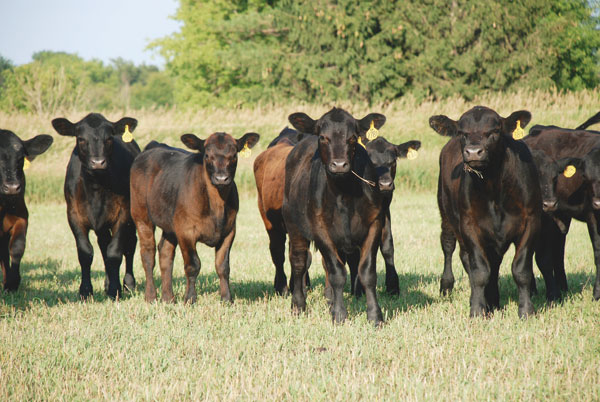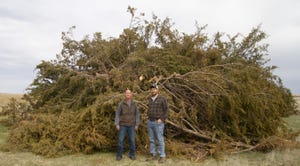Identify, Cull Temperamental Heifers Early
Culling temperamental heifers from your breeding herd has many benefits. Not only does it improve handler safety, but calmer cattle are more productive.

While watching temperamental housewives on reality television may be entertaining for some folks, working temperamental cows is anything but. Not only are temperamental cattle a safety danger to humans, but research has shown they’re less productive as well, according to Ron Randel, Texas A&M University animal science professor.
According to Randel, research shows that temperamental cattle have reduced feed intake, lower average daily gain, less marbling and tougher meat, and don’t respond as well to vaccines as do calmer cattle. However, he says the Beef Improvement Federation (BIF) “Guidelines For Uniform Beef Improvement” provide several systems that producers can use to identify temperamental cattle when they’re worked at weaning.
One system is a docility or chute score. It’s a scoring system that allows ranchers to evaluate cattle while they’re in the chute with the head caught but without the squeeze applied. The other BIF system is a pen score. Both are designed to allow a calf to exhibit normal reactions to handling and the presence of humans.
“Either the pen score or the docility score, from a commercial operator’s standpoint, are virtually free. You can get information quickly if you’re looking at a set of replacement heifers to buy or if you’re going through your own set of heifers to decide who to keep and who goes,” Randel says.
“The process is not that you’re looking for the most docile animal,” he points out. “You’re looking for the crazy one that’s going to be a problem. These animals have value, but they don’t belong in your breeding herd.”
Using these scoring systems, ranchers can dramatically affect the temperament of their cattle in a few years, he says. “Temperament is a heritable trait. The estimates range from 0.25 to 0.48 for beef cattle. This trait is as heritable as growth traits and you can make progress as rapidly as we’ve made progress on growth.” In addition, the genomics companies include docility in their DNA marker panels, allowing cattlemen to select for the trait on the bull side as well.
So, while the intent is to cull the bad ones, do you want to select for complete docility?
“The one thing we do find is that the intermediate animals, not the really calm and not the really temperamental, perform the best,” he says. “They will have the highest percent weaning rate and the highest pregnancy rates in the herd.”
Details on the chute and pen scoring systems are on pages 33-34 of the BIF Guidelines at http://beefimprovement.org/PDFs/guidelines/Guidelines-9th-Edition.pdf
About the Author(s)
You May Also Like
.png?width=300&auto=webp&quality=80&disable=upscale)


